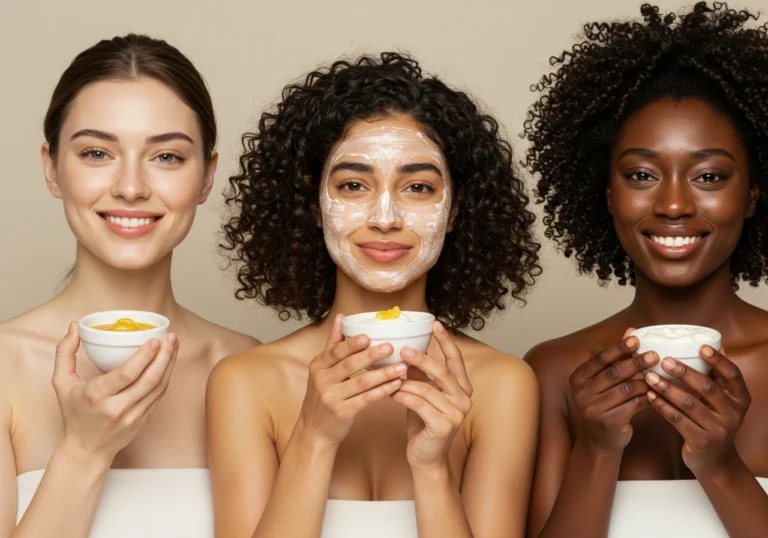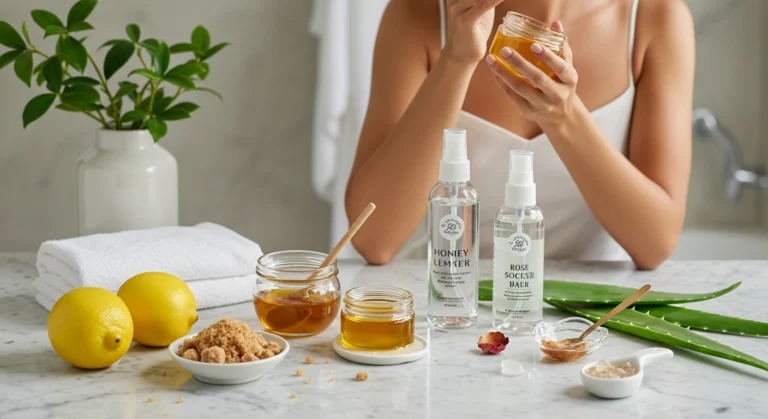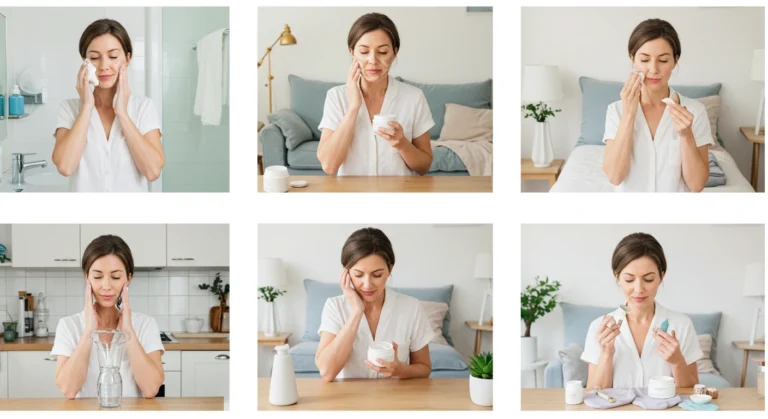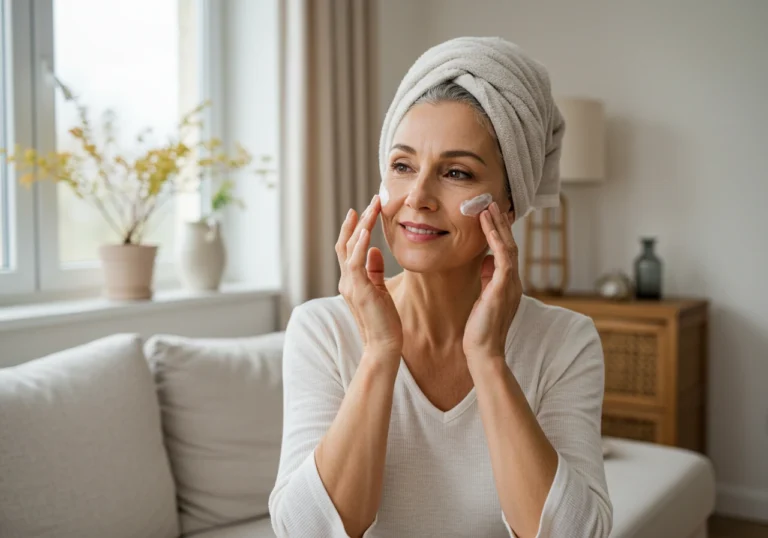Table of Contents
Is your skin feeling parched, tight, and lackluster despite trying countless moisturizers? You’re not alone. Dehydrated skin affects millions of people, leaving complexions looking dull and accentuating fine lines. But here’s the good news: nature offers powerful hydrating solutions that can transform your skin‘s moisture balance without harsh chemicals.
After testing hundreds of natural ingredients and formulations over my decade as a skincare formulator, I’ve discovered that the most effective hydration comes from simple, pure ingredients that work in harmony with your skin’s natural processes. These five hydration secrets have helped my clients achieve that coveted “glass skin” effect—plump, bouncy, and radiantly hydrated.
In this comprehensive guide, I’ll share my tried-and-tested natural hydrating products, complete with ingredient spotlights, application techniques, customization options for your unique skin concerns, and expert tips to maximize hydration. Get ready to unlock the moisture-boosting potential of nature’s most effective hydrators!
Why Natural Hydration Works
Modern skincare often relies on silicones and synthetic humectants that create the illusion of hydration but may not address the root causes of dehydration. Natural hydrating products offer something different:
- Biocompatible moisture retention that works with your skin’s natural barrier function
- Sustainable hydration that balances rather than disrupts your skin‘s moisture levels
- Nutrient-rich formulations that nourish while they hydrate
- Gentle, non-irritating ingredients suitable for even sensitive skin types
- Environmental benefits from using clean, sustainable ingredients
Choosing the Right Hydrating Ingredients

Top Ingredients for Deep Hydration
- Hyaluronic Acid: Though it sounds synthetic, this molecule naturally occurs in our skin and can hold up to 1000 times its weight in water. Look for plant-derived versions from fermentation processes.
- Aloe Vera Gel: Contains 99% water plus enzymes and vitamins that soothe while hydrating inflamed skin.
- Glycerin: This plant-derived humectant draws moisture from the air into your skin.
- Honey: A natural humectant with antibacterial properties that seals in hydration.
- Cucumber Extract: Rich in water content and antioxidants for cooling hydration.
What to Avoid
The key to effective natural hydration is avoiding ingredients that can counteract your hydrating efforts:
- Denatured Alcohols: They provide a quick-dry feeling but eventually dehydrate skin
- Synthetic Fragrances: Can trigger irritation and compromise your skin barrier
- Harsh Sulfates: Strip natural oils that help maintain hydration
- Heavy Silicones: While they feel smooth, they can prevent hydrating ingredients from penetrating
Smart Substitutions
If you’re sensitive to certain natural ingredients, try these alternatives:
- Oat milk instead of aloe vera for sensitive skin types
- Vegetable glycerin in place of honey for vegan formulations
- Rose water instead of tap water for additional soothing benefits
- Avocado oil rather than coconut oil if you’re acne-prone
DIY Hydrating Face Mask: Ingredients & Prep
Prep Essentials
Before applying any hydrating treatment, prepare your skin:
- Cleanse with a gentle, sulfate-free cleanser
- Lightly exfoliate (once weekly) to remove dead skin cells that block hydration
- Steam your face for 2-3 minutes to open pores (optional)
- Patch test new ingredients on your inner wrist before full application
DIY Moisture Boost Mask Ingredients
- 1 tablespoon plain Greek yogurt (provides lactic acid and probiotics)
- 1 teaspoon raw honey (humectant)
- ½ teaspoon aloe vera gel (hydration and soothing)
- 3 drops glycerin (moisture-binding)
- ¼ teaspoon cucumber juice (cooling hydration)
Pantry Alternatives
Don’t have specialized ingredients? These common kitchen items work well:
- Mashed avocado (rich in healthy fats and vitamins)
- Cooked oatmeal (colloidal properties soothe and hydrate)
- Plain yogurt (probiotic and gently exfoliating)
- Olive oil (moisturizing for very dry skin)
Step-by-Step Application Instructions
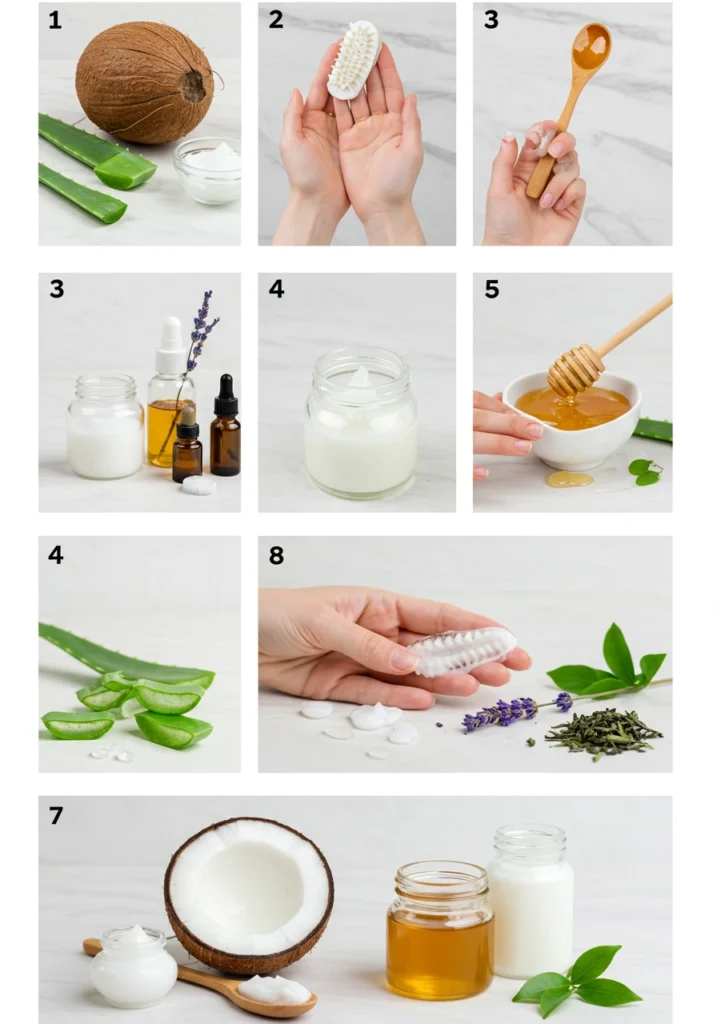
Before You Begin
- Pull hair back from your face and secure with a headband
- Ensure your hands are clean
- Have a soft washcloth ready for removal
- Apply to clean, slightly damp skin for best absorption
How to Apply Your Hydrating Treatment
- Combine all ingredients in a small bowl, mixing thoroughly until smooth
- Apply a generous layer to face and neck using clean fingertips or a facial mask brush
- Focus on areas that feel particularly dry (typically cheeks and forehead)
- Allow to sit for 15-20 minutes (but don’t let it fully dry)
- Practice deep breathing during this time to enhance relaxation and circulation
Rinse & Aftercare
- Rinse with lukewarm (never hot) water
- Pat (don’t rub) skin dry with a soft towel
- Immediately apply a hydrating serum while skin is still slightly damp
- Follow with a natural moisturizer to seal in hydration
- If daytime, finish with mineral sunscreen to protect your newly hydrated skin
Pro Tips for Maximum Hydration
Avoiding Irritation
- Start with weekly applications before increasing frequency
- Discontinue use if redness or irritation occurs
- Avoid applying natural acids (even gentle ones like yogurt) on broken skin
- Keep natural products away from the immediate eye area
Recommended Tools
- A dedicated mask brush ensures even application
- Silicone mask spatulas prevent product waste
- Reusable organic cotton pads for gentle removal
- Small glass containers for storage
Storage & Reuse
- Refrigerate unused portions in an airtight container for up to 3 days
- Cold application has added benefits for reducing puffiness
- Discard if you notice any changes in color, texture, or smell
- Make mini-batches rather than large quantities to ensure freshness
Custom Variations for Different Skin Needs
For Extremely Dry Skin
- Add ½ teaspoon of argan oil for deep nourishment
- Include 1 teaspoon of mashed avocado for healthy fats
- Use manuka honey instead of regular honey for enhanced healing
- Follow with a few drops of facial oil post-treatment
For Combination Skin
- Apply yogurt-based mask to oily T-zone
- Use honey-based mask on drier cheeks
- Add 1 drop of tea tree oil to help balance oilier areas
- Focus hydrating serums on dry areas only
For Sensitive Skin
- Eliminate potential allergens like yogurt
- Use colloidal oatmeal as a gentle base
- Substitute rose water for any water component
- Perform extra patch testing before full application
Best Times to Use Natural Hydrating Products
- Morning Hydration: Light layers of hydrating ingredients under sunscreen prevent daytime moisture loss
- Evening Intensive Treatment: Your skin‘s natural repair processes make nighttime ideal for deep hydration masks
- Seasonal Transitions: Increase hydration when moving into drier or colder weather
- Post-Exfoliation: Apply hydrating products after gentle exfoliation for deeper penetration
- Travel Recovery: Combat airplane cabin dehydration with intensive moisture treatments
FAQs
Q: Can natural hydrating products replace my regular moisturizer? A: Natural hydrating products work best as part of a complete routine. Use them before your moisturizer to boost hydration, rather than as a replacement.
Q: How often should I use intensive hydrating treatments? A: For most skin types, 1-2 times weekly is sufficient for masks, while daily hydrating serums and moisturizers maintain hydration levels between treatments.
Q: Will natural hydrating ingredients cause breakouts? A: Properly chosen natural ingredients shouldn’t cause breakouts, but always patch test. Those with acne-prone skin should avoid comedogenic ingredients like coconut oil or cocoa butter.
Q: Is drinking water enough to hydrate my skin? A: While internal hydration is important, topical hydrating products are essential because the skin is the last organ to receive water consumed internally.
Q: Can I use natural hydrating products with my prescription skincare? A: Always consult your dermatologist before combining any new products with prescription treatments. Some natural ingredients may interfere with medication efficacy.
Conclusion
Hydration is the foundation of healthy, radiant skin at any age. By harnessing the power of natural hydrating products, you’re not just addressing surface dryness—you’re supporting your skin’s moisture barrier for long-term health and resilience.
The beauty of natural hydration lies in its simplicity and effectiveness. Start with one or two of these hydrating secrets and observe how your skin responds. Most people notice improvements within days—plumper, more radiant skin with diminished fine lines and a healthy glow.
Remember that consistency is key to maintaining optimal hydration. Incorporate these natural solutions into your regular routine for sustained results. Your skin will thank you with the dewy, luminous complexion that no makeup can truly replicate.


